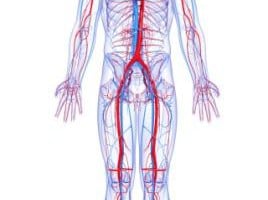Have you ever wondered or even thought about this question? Most of our lives we are in an upright position, either standing or sitting.
Blood is a liquid and, like all liquids on the surface of the earth, blood conforms to the law of gravity. Throw a glass of water into the air and it reliably falls to the earth. A physical force [gravity] acts upon the water pulls it to the earth.
Dealing with gravity is simply a fact of life here on earth. So when you assume an upright position in the morning the force of gravity immediately begins to act on the liquids in your body and draw them back to the earth.
How Blood Circulates
The body needs the blood to circulate in order to survive. So let’s look at some of the ways that the body meets this need. Without these mechanisms, blood in the legs of a standing human would remain in the legs under the influence of gravity and would never return to the heart. The body has come up with some ways to overcome the influence of gravity and allow blood to return to the heart.
The first mechanism to consider is the pumping force of the heart. The heart contracts vigorously and pushes the blood out to the tissues through the arteries. There is still some of this force left and it tries to push blood back to the heart via the veins. However, this is not enough as much of this force has been dissipated by the time the blood reaches the veins. The other problem is that the heart is not a continuous pump—it is an intermittent pump.
Heart Valve Actions
During the relaxation phase of the heart beat, the blood has no active, forward flow. It is during this time that gravity sees its chance and immediately starts pushing the blood back to the earth. The body counters this by having numerous one-way valves located along the course of our veins. When the force to return blood back to the heart is greater than the force of gravity trying to push blood down to the earth, the blood moves toward the heart and these delicate valves lie flat in the vein. However, when blood in the veins begins to flow backward away from the heart, the one-way valves activate, stretching across the vein and preventing the blood from falling toward the feet. The blood again moves toward the heart when the heart’s intermittent pumping action creates enough forward force to overcome gravity.
There are other mechanisms that aid in the return of blood flow to the heart. The muscle pumps that are present in our thighs, calves, and feet all help return blood to the heart. Therefore exercise, even something as simple as walking, is good for circulation and vein health. Pressures that develop in the abdomen and chest due to various physiological functions can also help return the blood to the heart.
In part 2 of our discussion, we will see what happens when there is disruption of the forces that fight gravity and how we can, by our actions, help our own circulation.
Dr. Robert Ruess has over 30 years of active practice in the treatment of vein and artery disease. Visit Five Star Vein Institute in Nevada to discuss your circulatory health with Dr. Ruess.


